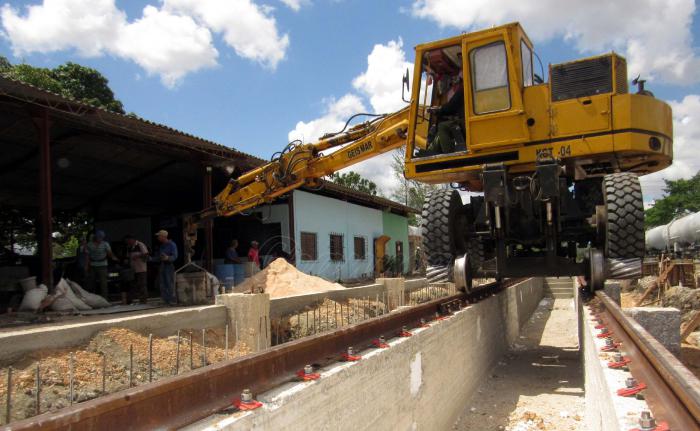Passenger railroad connection between the Cuban cities of Havana and Holguín, paralyzed since 2006, will be restored in the second half of this year as part of a recovery program for the deteriorated sector that has an investment plan of some 3 billion dollars.
The train that will cover the Havana-Holguín stretch will have the capacity to transport 720 passengers to different destinations with 12 cars imported from China, the state newspaper Granma reported this Monday.
For the reopening of the service, work is underway to restore heritage values and expand the facilities of the Railway Terminal in Holguín, located 770 kilometers east of Havana.
In an initial stage it will depart every three days and during the trip it will make stops in the western towns of Jaruco, Matanzas, Colón, Santa Clara, Guayos, Ciego de Ávila, Camagüey, and the eastern Las Tunas and Cacocum, the head of the commercial department of the Holguín Railroad Conglomerate, Ada Iris Quevedo, explained.
The critical state of passenger railroad transportation was addressed by a committee of the island’s Parliament in a report presented in December 2018 that reported the poor state of railroad tracks, bridges and grade crossings, as well as the low availability of locomotives, freight, passenger and motor cars, which limits services.
The Caribbean country’s railroad system has 8,194 kilometers of tracks, 1,839 bridges, 4,567 grade crossings, more than 21,000 workers in the sector, 252 stations, more than 500 locomotives, 13,468 freight cars, 20 motor cars and more than 230 passenger cars, according to data from the Ministry of Transportation.
The state program put in place to modernize national railroad transportation also includes the eastern destinations of Guantánamo and Granma, with the same frequency as Holguín, and also Santiago de Cuba, on alternate days.
This plan to recover the railroad system also foresees the rehabilitation of its main tracks through a joint project with Russia in which an investment of some 1.123 billion dollars is planned up to 2030.










